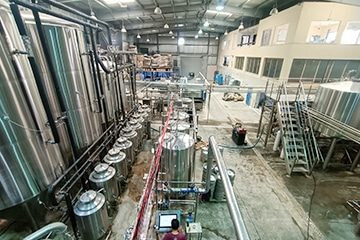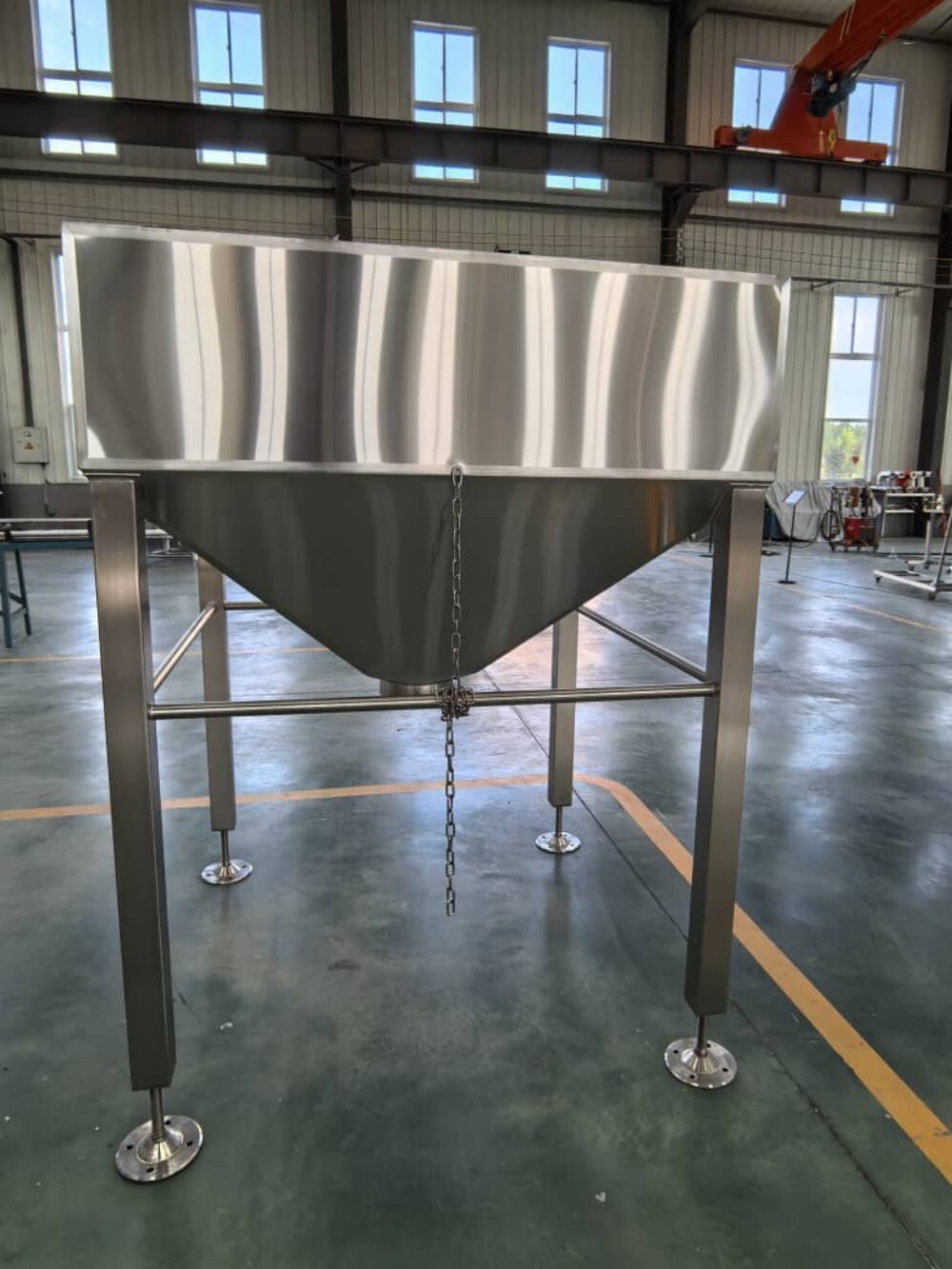
Scaling fermentation from pilot to production is a pivotal step for any brewery. Choosing the right Beer fermentation tank affects product quality, process reliability, regulatory compliance, and long-term cost. This guide explains practical selection criteria, technical performance considerations, certification requirements, and procurement tips tailored for information researchers, commercial evaluators, and enterprise decision-makers.
Definition & Key Concepts: What is a Beer fermentation tank?
A Beer fermentation tank is a stainless-steel vessel specifically designed to support yeast-driven fermentation under controlled temperature, pressure, and sanitation regimes. Typical features include conical bottoms for yeast harvesting, glycol jackets for temperature control, pressure ratings for conditioning or carbonation, CIP (clean-in-place) ports, and sanitary fittings for sampling and transfer. Understanding these core features is the first step when scaling up.
Application Scenarios: Where scale-up matters
Scale-up decisions depend on the brewery’s growth path. Craft brewers moving from 1–5 HL (hectoliter) batches to 20–200 HL require different tanks than beverage processors scaling kombucha or dairy lines. Consider whether tanks will be used as dedicated fermenters, unitanks (fermentation + conditioning), or for yeast expansion. For yeast propagation needs, integrating a dedicated system such as Yeast Expansion System can streamline operations and protect beer consistency when scaling production.
Technical Performance: Key specifications to evaluate
- Material & Finish: 304 vs 316L stainless steel; internal surface finish Ra ≤ 0.8 µm for hygiene.
- Volume & Geometry: Choose conical or cylindroconical shapes for solids separation and yeast recovery; headspace design affects foaming and krausen management.
- Thermal Control: Glycol jacket area, spiral or dimple jacket choices, and cooling capacity expressed in kW per m3.
- Pressure Rating: Vacuum to positive pressure limits (e.g., 0.5–2.5 bar) for open fermentation, closed transfer, and forced carbonation.
- CIP/SIP Compatibility: Ensure ports, spray balls, and manways support validated CIP cycles and optional SIP for aseptic steps.
- Instrumentation: Integrated temperature probes, pressure sensors, automated valves, and sampling ports for process control and data capture.
Standards & Certification: Compliance you should require
For enterprise-scale installations, insist on internationally recognized standards: ASME Section VIII (pressure vessels), PED (European Pressure Equipment Directive), 3.1/3.2 material certificates, and hygienic standards like 3-A or EHEDG where applicable. Traceability of stainless steel and weld documentation reduce regulatory risk and simplify audits. For export-oriented projects, confirm vendors can supply the required documentation.
Comparison Analysis: Unitank vs Dedicated Fermenter vs Open Fermentation
Procurement Guide: Steps to evaluate suppliers and proposals
- Define functional requirements: production throughput, batch sizes, end-product specs, cleaning cycles, and automation level.
- Require detailed technical datasheets: vessel geometry, wall thickness, finishes, welding procedures, insulation, and instrument lists.
- Ask for compliance docs: material certificates, pressure tests, FAT (Factory Acceptance Test) reports and on-site SAT (Site Acceptance Test) plan.
- Compare TCO, not just CAPEX: include utilities consumption, CIP chemical use, maintenance intervals, spare parts, and energy efficiency.
- Check turnkey capabilities: experienced integrators like ZYB offer design, fabrication, and commissioning—reducing integration risk and accelerating ramp-up.
Cost & Alternatives: Budgeting and trade-offs
Budgeting should include direct costs (vessel, controls, installation) and indirect costs (foundation, utilities upgrade, training, downtime). For many breweries the optimal balance is achieved by phased investment—starting with modular tanks and scalable control systems. Alternatives such as retrofitting existing vessels, leasing, or purchasing used ASME-certified tanks can lower initial spend but may increase long-term operational risks if documentation or hygiene standards are incomplete.
Industry Scenarios & Case Example
Case: a mid-size craft brewery planning a fourfold increase in annual output selected cylindroconical Beer fermentation tank arrays with integrated glycol capacity and automated CIP. Using stepwise deployment and a local integrator reduced commissioning from eight to three weeks and improved fermentation consistency by 14% measured as reduced batch variation. This demonstrates how right-sizing and vendor experience directly affect ROI.
Misconceptions & Clarifications
- Myth: Bigger tanks always reduce cost per liter. Clarification: Oversized tanks can increase dwell time, change yeast dynamics, and create sanitation challenges.
- Myth: All stainless steel is the same. Clarification: Grade, finish and welding impact hygiene and corrosion resistance.
- Myth: Automation is optional. Clarification: For scale-up, automation lowers operator error, ensures repeatability, and improves data traceability required by buyers and regulators.
QA & Operational Controls
Operational controls you should require include validated CIP cycles, temperature profiling, dissolved oxygen (DO) monitoring during critical processes, and SOPs for yeast handling. Implementing batch records and SCADA integration enables traceability and faster root-cause analysis when deviations occur.
Trends & Future-Proofing
The market is moving toward modular, skid-based fermentation systems for faster deployment and smaller footprints, increased digitalization with IIoT sensors, and sustainability measures such as heat recovery and efficient glycol loops. Selecting a Beer fermentation tank that supports retrofittable sensors and expansion reduces obsolescence risk.
FAQ for Decision-Makers
- Q: How to size fermenters for projected growth? A: Base on peak week throughput, desired batch cycle time, and contingency for cleaning and downtime.
- Q: What is an acceptable finish? A: Internal Ra ≤ 0.8 µm is industry practice for hygienic tanks.
- Q: When to require ASME or PED? A: If pressure rating exceeds local non-pressurized thresholds or if export/insurance requires certified pressure equipment.
Why choose a proven partner?
Enterprise decision-makers need suppliers who combine equipment quality with system integration experience. We have years of development and formed the ZYB team with full capability in design, fabrication and commissioning of higher quality & standard craft brewery systems. Our turnkey approach reduces installation risk and accelerates ramp-up, and we have expanded expertise into Kombucha, Dairy and Distilling systems. For tailored advice, documentation, and on-site commissioning plans, contact our integration specialists to evaluate your specific scale-up scenario.
Choosing the right Beer fermentation tank is a strategic decision: it affects product quality, regulatory compliance, operational costs, and brand reputation. For a pragmatic next step, request vendor FAT documentation, on-site references, and a detailed lifecycle cost model before committing. If you want hands-on assistance with selection, specification or commissioning, reach out to us to leverage proven turnkey solutions and project management expertise—let us help you scale successfully with confidence.
Tell us about your brewery equipment requirements!
At ZYB Craft, we’re dedicated to bringing your brewery vision to life. Our expert team of brewers, engineers, and craftspeople is ready to design and manufacture the perfect equipment for your brewing operation. Whether you’re just starting or expanding, we’re here to help. Please leave your specifications, and our team will get in touch to discuss your project in detail. We’ll work closely with you to create equipment that meets your unique needs and budget.
*Rest assured, your information will be kept confidential and used solely for the purpose of assisting you with your brewery equipment needs. We look forward to brewing success together!


